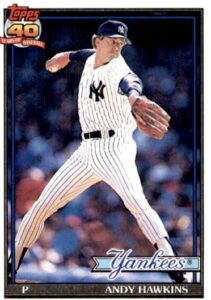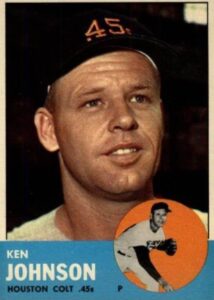More pre-season musings. I was looking at rosters and noted that the Dodgers – for the second year in a row – had four former MVPs on the team: Freddie Freeman; Cody Bellinger; Mookie Betts; and Clayton Kershaw. They did it a year ago, as well – with Albert Pujols replacing Freeman – and are the first team to achieve that distinction in consecutive seasons. Notably, of the five teams to boast four former MVPs on their Opening Day rosters, only one – the 1978 Reds – had four players who earned their MVP recognition with the team.
As regular readers know, when Baseball Roundtable looks into a trivia tidbit, “one thing always leads to another.” In this case, it led to a look into teammates who finished atop the MVP voting in the same season. I learned that the last time, MLB saw teammates finish 1-2-3 in Most Valuable Player race was in 1966– when Frank Robinson, Brook Robinson and Boog Powell of the World Champion Orioles earned the top three spots in the American League MVP balloting. In this post, Baseball Roundtable will take a look at all those instances in which teammates finished 1-2 or 1-2-3 in the Most Valuable Player balloting.
Let’s start with a look at teammates who finished 1-2-3 in the MVP balloting.
1966 – OF Frank Robinson, Orioles, MVP … 3B, Brooks Robinson, Orioles, second … 1B Boog Powell, third
The 1966 World Champion Orioles (97-63) were clearly led by OF Frank Robinson.
- Frank Robinson hit .316-49-122, winning the AL Triple Crown. He also led the league in runs scored (122).
- Brooks Robinson, won his seventh straight Gold Glove, and also had a solid offensive year (.269-23-100).
- Boog Powell came in at .287-34-109.
Notably, three Twins finished 4-5-6: Harmon Killebrew, Jim Kaat and Tony Oliva. Also finishing in the top ten for the Orioles that year was shortstop Luis Aparicio at number nine.
From 1964-66, Brooks Robinson never finished lower than third in the AL MVP voting. One first, one second, one third.
______________________________________
1959 – 2B Nellie Fox, White Sox, MVP … SS Luis Aparicio, White Sox, second … P Early Wynn, White Sox, third
The 1959 White Sox used defense and pitching to upend the favored Yankees and finish first in the American League (94-60-2) – despite having only one player with at least 20 home runs (C Sherm Lollar , 22) and no player with more than 84 RBI or 98 runs scored. In fact, only one regular member of the lineup hit higher than .275. It’s no surprise that two Gold Glove middle infielders and a pitcher were their top MVP vote getters.
- Nellie Fox hit .306-2-70, with 84 runs scored.
- Luis Aparicio it .257-6-51, with 98 runs scored and 56 steals.
- Early Wynn led the league with 22 wins (ten losses) and put up a 3.17 ERA in 37 starts.
The White Sox won the Al pennant in 1959 despite finishing sixth (out of eight teams) in runs scored and batting average and last in home runs. The ChiSox had five of the top ten finishers in the MVP balloting that year, with CF Jim Landis at number-seven and C Sherm Lollar at number-nine joining the top three.
________________________________
1941 – 1B Dolph Camilli, Dodgers, MVP … CF Pete Reiser, Dodgers, second … pitcher Whit Wyatt Dodges, third
The 1941 Dodgers went 101-54-3, finishing atop the National League – boasting a potent attack that led the league in runs scored (800), home runs (101) and average (.272), and a pitching staff that boasted two 20-game winners and the league’s lowest ERA (3.14), That was reflected in the MVP balloting.
- 1B Dolph Camilli hit .285 and led the league in home runs (34) and RBI (120), while scoring 92 runs.
- CF Pete Reiser led the league in batting (.343), runs scored (117), doubles (39), triples (17) and tossed in 14 home runs and 76 RBI.
- P Whit Wyatt led the league with 22 wins (10 losses) and seven shutouts. His 2.34 ERA was second in the league, as were his 23 complete games and 176 strikeouts.
Dodgers’ Kirby Higbe and OF Dixie Walker also finished in the balloting’s top ten at seven and ten, respectively.
__________________________
1914 – 2B Johnny Evers, Braves, MVP … SS Rabbit Maranville, Braves, second … P Bill James, Braves, third
The 1914 World Champion Braves finished the regular season 94-59-5. They were dubbed the Miracle Braves after finishing in fifth place the previous year and being 16 games out of first place on July 4 and in last place (11 games out) as late as July 18. In fact, the Braves did not drop their deficit into single digits until July 31 – and yet they finished the season 10 ½ games ahead of the second-place Giants. No wonder they had the top three MVP vote-getters in Bill James (one of two 26-game winners on the pitching staff) and infielders Johnny Evers and Rabbit Maranville, who provided sparkling defense up the middle (and led the league in double plays), while also contributing on offense.
- Johnny Evers hit .279-1-40 , with 12 steals and 81 runs scored in 139 games.
- Rabbit Maranville hit .246-4-78, with 74 runs and 28 steals in 156 games.
- Bill James went 26-7, 1.90, with 30 complete games in 37 starts.
Brave’ pitcher Dick Rudolph also finished in the top ten, seventh in the voting.
Bill James pitched in only four MLB seasons, with a career line of 37-21, 2.28. Outside of that 1914 miracle season, he was 11-14, 2.88. In Game Two of the 1914 World Series, James pitched a two-hit shutout, as the Braves topped the Athletics 1-0. Side note: James career was cut short by chronic arm fatigue which surfaced in 1915.
______________________________________
Now, a look at teammates who finished 1-2 in the MVP vote.
2000 – 2B Jeff Kent, Giants, MVP … LF Barry Bonds Giants, second
In 2000, as the Giants won 97 games to lead the NL West.
- Jeff Kent hit .334, with 33 home runs, 125 RBI, 114 runs scored and 12 steals.
- Barry Bonds hit .306-49-106, with 129 runs scored and 11 steals.
Kent received 392 points in the balloting (with 22 first-place votes); Bonds was at 279 (six first-place votes). They were at the heart of the Giants’ potent attack – and a solid case could be made for either player. After finishing second to Kent in the 2000 MVP voting, Bonds went on to win the National League MVP Award in each of the next four seasons.
2000 was truly a “power year in the balloting, as every one of the top 11 National League vote-getters hit at least 33 home runs (seven hit 40+) and drove in at least 104. The Rockies’ Todd Helton finished sixth in the balloting, despite leading the league in average (.373), RBI (147) and hits (216), while also stroking 42 homers. The top four finishers in the AL MVP race all hit 40+ homer and drove in 130+ runs. Pitcher Pedro Martinez broke the string, by finishing fifth in the voting.
__________________________________
1989 – LF Kevin Mitchell, Giants, MVP… 1B Will Clark, Giants, second
The Giants went 92-70, finishing first in the NL West, with Clark and Mitchell each driving in 100+ runs.
On the season:
- Kevin Mitchell hit .291, and led the NL in home runs (47) and RBI (125), while also scoring 100 runs.
- Will Clark hit .333-23-111, and led the NL with 104 runs scored.
Mitchell outpaced Clark in balloting 314 to 222 in points and 20-to-three in first-place votes.
_______________________________________
1983 – SS Cal Ripken, Jr., Orioles, MVP … 1B Eddie Murray, Orioles, second
The Orioles finished 98-64 and went on to win the World Series behind these two MVP candidates:
- Cal Ripken, Jr. went .318-27-102, and led the AL in hits (211) and runs scored (121), while playing in all 162 games;
- Eddie Murray was close, ending at .306-33-111, with 115 runs scored.
It was a close vote (322-290), with Ripken getting 15 first-place nods and Murray ten. The only other first-place votes went to White Sox catcher Carlton Fisk (three), who finished third (.286-26-86).
_________________________________
1976 – 2B Joe Morgan, Reds, MVP … OF George Foster, Reds, second
The Reds went 102-60 and won the nL West (and World Series).
- Joe Morgan hit .320, with 27 home runs, 111 RBI and 113 runs scored (and picked up his third straight Gold Glove).
- George Foster hit .306, with 29 home runs and a league-leading 121 RBI.
The clinchers for Morgan were likely his 60 steals (to Foster’s 17) and 114 walks to Foster’s 54. Those walks gave Morgan a league-topping .444 on-base percentage (to Foster’s .364). Morgan got 311 points in the full ranked voting to 221 for Foster. Morgan got 19 first-place votes to Foster’s five. A third Reds’ player, Pete Rose, finished fourth in the balloting.
________________________________________
1971 – P Vida Blue, A’s, MVP … 3B Sal Bando, A’s, second
The A’s went 101-60 in winning the AL West, as Vida Blue won the Cy Young and Most Valuable Player Awards.
- Vida Blue went 24-8, with a league-leading 1.82 earned run average. He threw 24 complete games in 39 starts and led the league with eight shutouts.
- Bando went .271-24-94 (leading the A’s in RBI).
Blue outpaced Bando 268-182 in the full ranked voting and had 14 first-place votes to Bando’s four. Reggie Jackson, who hit .277-32-80, with 87 runs scored and 16 steals (outpacing Bando in all those categories) finished 14th in the balloting.
___________________________________
1968 – P Denny McLain, Tigers, MVP …. C Bill Freehan, Tigers, MVP
1960 was the “Year of the Pitcher,” with Denny McLain (AL) and Bob Gibson (NL) each capturing their league’s Cy Young and MVP Awards. McLain may have pulled his battery mate Bill Freehan along for the ride. The Tigers went 103-59-2 (and went on to win the World Series).
- Denny McLain went 31-6, 1.96, leading the AL in wins (31), complete games (28) and innings pitched (336).
- Bill Freehan went .263-25-84 in 155 games (138 behind the plate).
McLain outpaced Freehan 280 to 161 in the ranked voting and got all 20 first-place votes. Boston’s 1B/OF Ken Harrelson finished third despite outhitting Freehan (.275, with 35 home runs and a league-topping 109 RBI). That season a .275 average was good for ninth-best in the AL.)
Denny McLain and Bill Freehan are the only battery mates to finish 1-2 in he MVP voting in the same season.
____________________________
1967 – 1B Orlando Cepeda, Cardinals, MVP … C Tim McCarver, Cardinals, second
The Cardinals went 101-60 in 1967 (and won the World Series) and Orlando Cepeda was the big bat in the lineup, leading the team in average, home runs and RBI. For the season:
- Orlando Cepeda hit .325-25-111, with 11 steals and 91 runs scored;
- Tim McCarver hit .295-14-69, with eight steals and 68 runs scored and was an acknowledged team leader.
Cepeda got all 20 first-place votes and outpaced McCarver 280-136 in the balloting.
___________________________________
1965 – SS Zoilo Versalles, Twins, MVP … RF Tony Oliva, Twins, second
The Twins went 102-60 in 1965, taking the AL Pennant. SS Zoilo Versalles was selected AL MVP, topping teammate Tony Oliva.
- Zoilo Versalles led the AL in plate appearances (728); at bats (666); runs scored (126), doubles (45), triples (12) and total bases (308), while batting .273, popping 19 home runs and stealing 27 bags.
- Tony Oliva won the AL batting Championship (.321) and led the league in hits (185), popped 16 home runs, drove in 98 and scored 107.
In 1965, when Zoilo Versalles won the AL Most Valuable Player Award, he led the American League in strikeouts and errors.
Versalles got 19 of the twenty first-place votes and 275 total points in the balloting. Oliva got the remaining first-place vote and 174 points.
___________________________________________
1962 – CF Mickey Mantle, Yankees, MVP … 2B Bobby Richardson, Yankees, second
The World Champion Yankees went 96-66 in the regular season in 1962, as Mickey Mantle won his third MVP Award and first Gold Glove.
- Mickey Mantle hit .321-30-89, with 96 runs scored and nine steals in 123 games.
- Bobby Richardson hit .302-8-59, with 99 runs scored and a league-topping 209 hits in 161 one games (and was the glue in the Yankee infield).
Mantle got 13 first-place votes and 234 points in the balloting. Richardson got five first place votes and 152 points. The remaining two first-place votes went to the Twins’ Harmon Killebrew and the Yankees’ Tom Tresh.
Bobby Richardson is the only player to win the World Series MVP Award while playing on the losing team (1960).
________________________________________
1961 – RF Roger Maris, Yankees, MVP … CF Mickey Mantle, Yankees, second
Okay, how do you not give the MVP Award to the player who broke Babe Ruth’s hallowed home run record? But, despite the record, the vote was a lot closer than you might think. Here are the stats.
- Roger Maris hit just .269, but led the AL in home runs (61), RBI (141) and runs scored (132), as he captured his second straight MVP Award.
- Mickey Mantle hit .317-54-128, with 131 runs scored and 12 steals.
In the voting, Maris got seven first-place votes and 202 points; Mantle got six first-place votes and 198 points. (Jim Gentile, who tied Maris for the RBI lead and had 46 home runs and a .302 average picked up five first-lace votes in a third-place finish.) The Yankees won 109 regular-season games (53 losses, one tie) and the World Championship behind the M&M boys.
__________________________________________
1960 – RF Roger Maris, Yankees, MVP … CF Mickey Mantle, Yankees, second
In a precursor to the 1961 MVP results, Roger Maris edged teammate Mickey Mantle for the AL MVP Award as the Yankees went 97-57-1 to lead the American League.
- Roger Maris hit .281, with 39 homers and a league-topping 112 RBI (98 run scored).
- Mickey Mantle hit .275, hit an AL-best 40 homers, drove in 94 runs and scored an AL-leading 119.
In the balloting Mantle got ten first-place votes to Maris’ eight, but lost 225 to 222 in total points.
The 1960 MVP race between Roger Maris and Mickey Mantle was the closest ever among teammates – a three-point difference among 447 points for the two leaders. The closest vote ever came in 1947, when Joe DiMaggio edged Ted Williams by one point (202-201) – despite the fact that Williams won the Triple Crown.
_______________________________________
1956 – CF Mickey Mantle, Yankees, MVP … C Yogi Berra, Yankees, second
Another Yankee 1-2 punch in the MVP chase. Finishing atop the MVP balloting for the World Champion Yankees (970-57 in the regular season) were:
- Triple Crown winner Mickey Mantle (.353-52-130, with a league-leading 132 runs scored); and
- Yogi Berra (.298-30-105, with 93 runs scored).
Mantle got 336 points and all 24 first-place votes and Berra accumulated 186 points. The Yankees went 97-57 – and went on to win the World Series (over the Dodgers) four games-to-three.
In an 18-season MLB career, Mickey Mantle finished among the top three in AL MVP voting seven times.
__________________________________________
1956 – P Don Newcombe, Dodgers, MVP … P Sal Maglie, Dodgers Second
The 1955 Dodgers edged the Milwaukee Braves by one game for the NL pennant going 93-61. Overall, the Dodgers outscored the Braves 720-709 on the season and gave up 32 fewer runs.
A pair of Dodgers pitchers finished 1-2 in the MVP balloting.
- Don Newcombe, led the NL in wins with 27 (seven losses), put up a 3.06 ERA and tossed 18 complete games in 36 starts.
- Sal Maglie went 13-5, 2.87 for the Dodgers after coming over from the Indians in May.
Newcombe got eight first-place votes and 223 points to Maglie’s four first-place votes and 183 points. Notably, two pretty well-known Braves finished third and fourth: Hank Aaron (.328-26-92) and Warren Spahn (20-11, 2.78).
___________________________________
1955 – C Roy Campanella, Dodgers, MVP … CF Duke Snider, Dodgers, second
In 1955, the Dodgers finally knocked off the crosstown rival Yankees in the World Series. They got there on a 98-55-1 regular-season record fueled, in great part, by Roy Campanella and Duke Snider.
- Roy Campanella hit .318-32-107, with 81 runs scored.
- Duke Snider hit .309, with 42 home runs, a league-leading 136 RBI and a NL-best 126 runs scored.
Each of these two Dodgers got eight first-place votes (the Cubs Ernie Banks got six), with Campanella winning the total point count 226-221.
_________________________________
Bobby Shantz In the Lead
In 1952, the Athletics’ Bobby Shantz won the AL Most Valuable Player Award on the strength of a 24-7, 2.48 record … despite the Athletics’ 79-75 fourth place finish (or maybe because of it … the Athletics were 25-8 in games in which Shantz pitched and 54-67 when he didn’t take the mound). Shantz gets a shout out here because the next three finishers in the MVP balloting were all from the World Champion Yankees: Allie Reynolds, Mickey Mantle and Yogi Berra.
______________________________________
1945 – P Hal Newhouser, Tigers, MVP … 2B Eddie Mayo, Tigers, second
The 1945 World Champion Tigers won the AL pennant with an 88-65-2 record, behind the big arm of Hal Newhouser.
- Hal Newhouser led the AL with 25 wins (nine losses) and a 1.81 ERA. He also led in starts (36), complete games (29), shutouts (8); innings pitched (313 1/3) and strikeouts (212).
- Tigers’ 2B Eddie Mayo hit .285-10-54, with 71 runs scored.
Although the statistics would seem to say otherwise, the vote was closer than you might expect, as Mayo was rewarded for sparkling defense, on-field leadership and solid offensive numbers for a middle infielder (at the time). Mayo got seven fist place votes to Newhouser’s nine – and was outscored 236-164 in the full voting.
_________________________________
1944 … P Hal Newhouser, Tigers, MVP… P Dizzy Trout, Tigers, second
The Tigers finished second in 1944 (88-66-2), despite having the number-one and two finishers in the MVP balloting – a pair of pitchers who combined for 56 wins.
- Southpaw Hall Newhouser led the league with 29 wins (nine losses) and 187 strikeouts, while putting up a 2.22 ERA, 25 complete games and six shutouts.
- Righty Dizzy Trout nearly matched Newhouser with 27 wins (14 losses) and led the league in ERA (2.12), complete games (33) shutouts (7) and innings pitched (314).
In 1944, Hal Newhouser and Dizzy Trout finished 1 & 2 in the AL (in varying order) in wins, ERA, innings pitched, strikeouts, complete games and shutouts.
In the balloting, Trout got 10 first-place votes to Newhouser’s seven, but lost out in the full ranked voting 236-232.
_________________________________________
1943 … OF Stan Musial, Cardinals, MVP … C Walker Cooper Cards, second
Stan Musial, in just his second full MLB season, captured his first batting crown and MVP Award as the Cardinals finished on top of the NL with a 105-9-3 record.
Side note: Sign of the times, the Cardinals had no batter with more than 13 home runs and no hitter with more than 81 RBI (Musial and Walker Cooper tied for the team lead). Still, they finished second in the NL in runs scored and home runs. They also posted the league’s best earned run average (2.57) – more than a half run better than the second-best team.
- Stan Musial led the league in average (.357), hits (220), doubles (48) and triples (20); while scoring 108 runs, hitting 13 home runs, driving in 81 and stealing nine bases.
- Walker Cooper hit .318-9-81, with 52 runs scored – and caught the pitching staff that led the league in ERA.
Musial got 13 first-place votes and 267 ranked points to Cooper’s five and 192, respectively,
In the six seasons Between 1946 and 1951, Stan Musial finished in the top two in the NL MVP race five times. In those six campaigns, he averaged .349-28-112, with an season-average 122 runs scored, 40 doubles, 14 triples, 87 walks and just 34 strikeouts. Stan “The Man,” indeed.
_________________________________________
1942 – P Mort Cooper, Cardinals … OF Enos Slaughter, Cardinals, second
The World Champion Cardinals went 106-48-2 on the season , topping the league in run scored (755) and ERA (2.55). It seems appropriate that a Cardinals’ pitcher and batter would find their way to the top of the MVP balloting.
- Mort Cooper had a solid season going 22-7, 1.78 (although, truth be told, the Cardinals’ Johnny Beasley was not far behind at 21-6, 2.13). Cooper also had 22 complete games and ten shutouts. Cooper led the NL in wins, ERA and shutouts.
- Enos Slaughter led the Cardinals’ lineup in average (.318), RBI (98), home runs (13), runs scored 100, hits (188) and triples (17). He led the NL in hits and triples, was second in average and runs scored and third in runs batted.
Cooper got 13 first place votes and 263 points to Slaughter’s six first-place recognitions and 200 ranked points.
In 1942 Mort Cooper won the NL Most Valuable Award. A year later, his brother Walker Cooper nearly duplicated the feat – finishing second in the MVP voting to Stan Musial.
_________________________________
1934 – C Mickey Cochrane, Tigers, MVP … 2B Charlie Gehringer, Tigers, second
The 1934 Tigers finished first in the AL with a 101-53 record – led by player-manager Mickey Cochrane (who was also the AL MVP). All Star second baseman Charlie Gehringer finished second in the balloting.
- Mickey Cochrane played in 129 games and hit .320, with two home runs and 75 RBI, while also managing and, of course, handling backstop duties.
- Gehringer hit .356-11-127, scored a league-leading 135 runs and posted an NL-best 214 hits.
Cochrane edged Gehringer 67 points to 65 in the voting.
Primary Resource: BaseballReference.com
 Baseball Roundtable is on the Feedspot list of the Top 100 Baseball Blogs. To see the full list, click here.
Baseball Roundtable is on the Feedspot list of the Top 100 Baseball Blogs. To see the full list, click here.
I tweet baseball @DavidBBRT
Follow/Like Baseball Roundtable’s Facebook Page here. More baseball commentary; blog post notifications; PRIZES.
Member: Society for American Baseball Research (SABR); Negro Leagues Baseball Museum; The Baseball Reliquary.

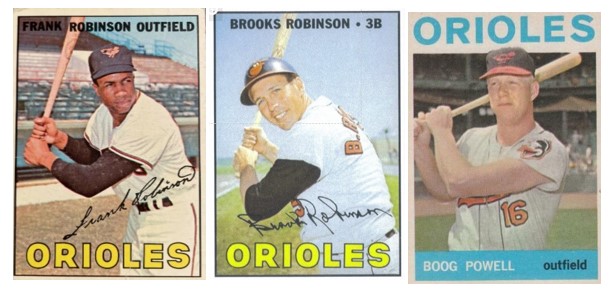
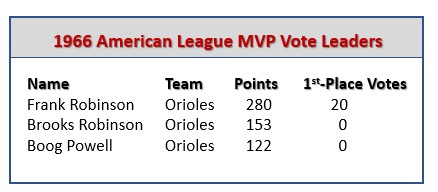





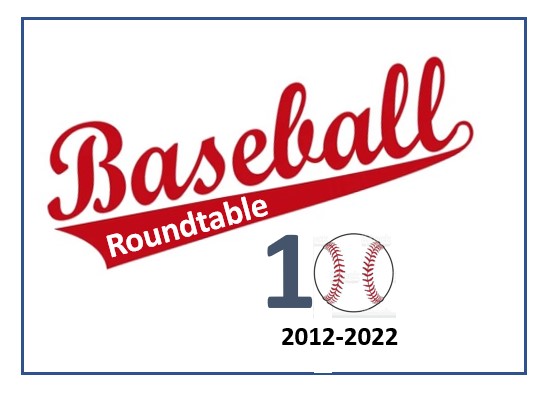
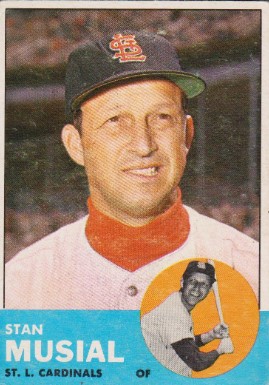
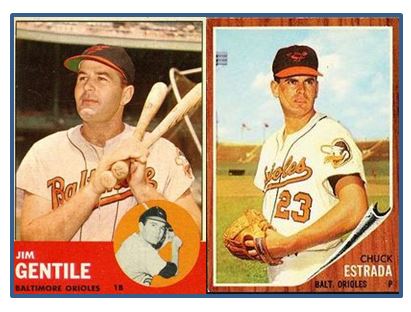
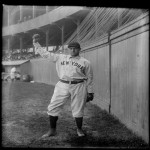
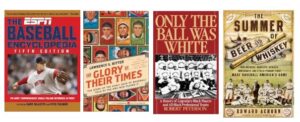

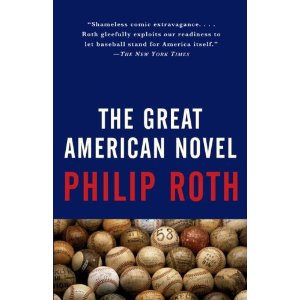 Written from the perspective of retired sport journalist “Word” Smith,” The Great American Novel takes you into the hearts and (often dark) souls of a team made up of ex-cons, alcoholics, amputees, veteran players well beyond their primes, 90-pound adolescents not ready for the big-time, and even extremely vindictive Lilliputians – and into Patriot League (the third major league) ballparks in places like Asylum, Ohio; Terra Incognita, Wyoming; and Kakoola, Wisconsin. It also takes you from the dugout to an asylum (for an exhibition game) to the House Un-American Activities Committee. The prologue includes Word Smith’s encounter with Earnest Hemingway and the book wraps up with a letter written by Smith to China’s Chairman Mao.
Written from the perspective of retired sport journalist “Word” Smith,” The Great American Novel takes you into the hearts and (often dark) souls of a team made up of ex-cons, alcoholics, amputees, veteran players well beyond their primes, 90-pound adolescents not ready for the big-time, and even extremely vindictive Lilliputians – and into Patriot League (the third major league) ballparks in places like Asylum, Ohio; Terra Incognita, Wyoming; and Kakoola, Wisconsin. It also takes you from the dugout to an asylum (for an exhibition game) to the House Un-American Activities Committee. The prologue includes Word Smith’s encounter with Earnest Hemingway and the book wraps up with a letter written by Smith to China’s Chairman Mao.
